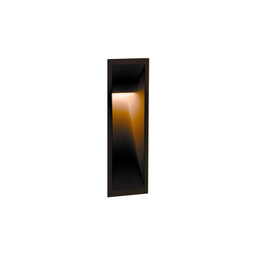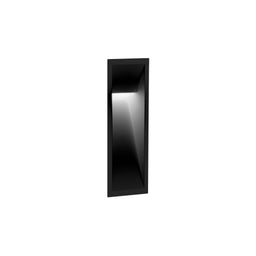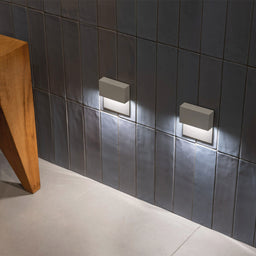
Colour temperature
When browsing the Normo website, you will have noticed that different products have different colour temperatures.
How important is this? And how can it affect the space where the lamp will be placed?
In the following paragraphs you can find a brief explanation of this concept in order to better understand this property of light.
Understanding colour temperature
Colour temperature refers to the hue or appearance of the colour emitted by a light source. It is measured in units of Kelvin (K) and is used to describe whether a light source emits its colour on a scale ranging from warm to cool colours.
Therefore, it is important to define a colour temperature that will match the intended use of the space, that considers the stimuli each colour temperature can induce, and the overall feeling that is intended in the environment, as it has an impact on a physical, mental and behavioural level.
Understanding colour temperature values
Colour temperature values range from 1000K to 10 000K. At Normo's online store, our luminaires range varies from 2200K to 6500K. Along this scale, it is common to group values into three categories: warm colours, neutral colours and cool colours. There is no consensus or standardisation regarding the categorisation or naming of these tones, so the information can be disparate, but throughout this page you can get a better idea of these values and how adequate they are to each environment.

Warm colours equal higher values
Lower colour temperatures, below 2700K, are considered warm and emit a reddish (at the warmest end of the spectrum) or yellowish light, similar to the colour of a flame.
A value of 1500K is similar to that of a candle light. A value of 2000K is similar to that of a sunset, while a value of 2700K is characteristic of an incandescent bulb, which explains why it is one of the most common light temperatures and one that most people are used to.
These warmer tones are used to create more intimate and friendly environments, for relaxation and unwinding, as they make it easier to rest. This is because their impact on the circadian rhythm is smaller, and does not influence the production of melatonin by our body. Therefore, light sources with low temperatures are most suitable when choosing lamps for bedrooms, living rooms or dining areas.
Neutral colours - between 2700K and 4000K
Intermediate colour temperatures, called neutral, range between 2700K and 4000K. They are also called neutral or warm whites and present (as the name suggests) a more balanced and soft white tone, but one which is still inviting and comfortable.
These tones stimulate concentration and allow other colours to be highlighted or displayed more faithfully, and can often be found in the lighting of commercial spaces (such as stores), offices, libraries and study areas. They are also suitable for rooms in domestic settings such as an entrance, hallways, bathrooms or kitchens, where the lighting should provide some stimulation and ease visibility, but should not create a shock for the user.
Cool colours - stimulation and focus
Higher colour temperatures, above 4000K, are considered cool. These temperature values are the most effective at eliciting a stimulus and facilitating states of focus, energy and alertness.
Up to 7000K, these light sources emit a light similar to daylight and can also be referred to as cool whites. The higher the value, the bluer the light will be, and in general, they are considered brighter and sharper. This type of light can be an adequate choice for offices (especially if they have little natural light) or for commercial spaces where the goal is to stimulate and attract the user.
Bluer colour temperatures are commonly seen in hospitals, pharmacies, laboratories, workshops, industries, and in spaces with high traffic or where continuous standing is not intended (such as corridors or tunnels). They also contribute to the creation of environments with perceptions of purity, cleanliness and hygiene.
In a residential setting, they are most commonly used in areas such as basements and garages, but they can also be a choice to consider when lighting bathrooms or kitchens.
 |
 |
 |
| 2700K | 3000K | 4000K |
| Colour temperature differences illustrated by the Wally wall lamp, with three options available |
 |
|
Different colour temperatures in a Lilly p pendant lamp. |
The connection with styles, decoration and materials
Colour temperature can also play a role in the choice of materials or decoration.
Colder temperatures tend to work worse with materials such as wood and brick, as the natural tones of these materials are drowned out by the blue hues of these temperatures. On the other hand, if you want to brighten up a space that is mostly made of concrete, stone or dominated by a neutral or cool colour palette, a higher colour temperature may be better suited to the nature of these materials.
 |
 |
| Cool colour temperature on a tile/stone slab with a cool colour palette, exemplified by the Tape 8 wall lamp. | Warm colour temperature for exterior facade lighting on wood and warm tones, exemplified by the Canto Kubi w wall lamp. |
Colour temperature: a tool to use light to your advantage
In short, colour temperature is an important tool for creating an atmosphere that is appropriate for each situation. Therefore, when deciding, you should consider the most important factors for the location of the light source, not forgetting the sensations that you may want to convey.
Despite all these considerations, personal taste and the influence it may have on the choice of lighting should also be taken into account — some people prefer cooler or warmer tones when lighting of certain rooms or in their homes.
However, in many cases, this choice is not a determining factor as the light source of the lamps is replaceable. This means that the lamp bulb can be changed if the lamp is placed in a different location, and with it the colour temperature. At Normo, this information is provided in the fields indicating the socket and light source of each item.
In lamps with an integrated light source, it will not be possible to make this change, so special attention should be paid to the intended purpose. If greater versatility is required, at the Normo online store you can find LED lamps that allow you to adjust the colour temperature, such as the Landon ceiling lamp series or the Tense portable lamps.
If you need any help or advice, our team can help when choosing the colour temperature and other issues that may arise in your lighting project.
Click here to find all the ways you can get in touch with us.
Last updated: 12/03/2025
